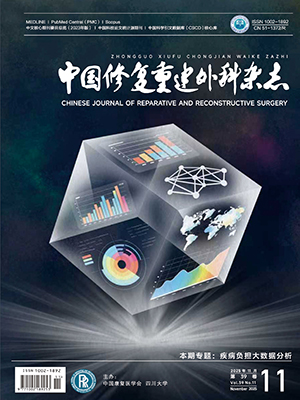Objective To investigate the cl inical results and complications of minimally invasive anterior transarticular screw fixation and fusion for atlantoaxial instabil ity. Methods Between May 2007 and December 2010, 13 patients with atlantoaxial instabil ity were treated with minimally invasive anterior transarticular screw fixation and fusion under endoscope. There were 11 males and 2 females, aged 17-61 years (mean, 41.3 years). The time between injury and operation was 5-14 days (mean, 7.4 days). All cases included 6 patients with Jefferson fracture, 5 with odontoid fracture, and 2 with os odontoideum. According to Frankel classification of nerve functions, 2 cases were rated as grade D and 11 cases as graed E. The operation time, intra-operative blood loss, radiation exposure time, and complications were recorded and analyzed. The stabil ity was observed by X-ray films. The cl inical outcome was assessed using the Frankel scale, and the fusion rates were determined by CT scan threedimensional reconstruction at last follow-up. Results The mean operation time was 124 minutes (range, 95-156 minutes); the mean intra-operative blood loss was 65 mL (range, 30-105 mL); and the mean radiation exposure time was 41 seconds (range, 30-64 seconds). Thirteen patients were followed up 12-47 months (mean, 25.9 months). No blood vessel and nerve injuries or internal fixator failure occurred. The bone fusion time was 6 months, and the dynamic cervical radiography showed no instabil ity occured. At last follow-up, the neurological function was grade E in all patients. The fusion rate was 84.6% (11/13). No continuous bone bridge was seen in the joint space of 2 patients, but they achieved stabil ity. Conclusion Minimally invasive anterior transarticular screw fixation and fusion is a safe and effective procedure for treatment of atlantoaxial instabil ity.
Citation: LU Yan,WANG Jian,ZHENG Wenjie,LIU Jie,HUANG Bo. MINIMALLY INVASIVE ANTERIOR TRANSARTICULAR SCREW FIXATION AND FUSION FOR ATLANTOAXIAL INSTABILITY. Chinese Journal of Reparative and Reconstructive Surgery, 2012, 26(7): 769-772. doi: Copy
Copyright © the editorial department of Chinese Journal of Reparative and Reconstructive Surgery of West China Medical Publisher. All rights reserved




